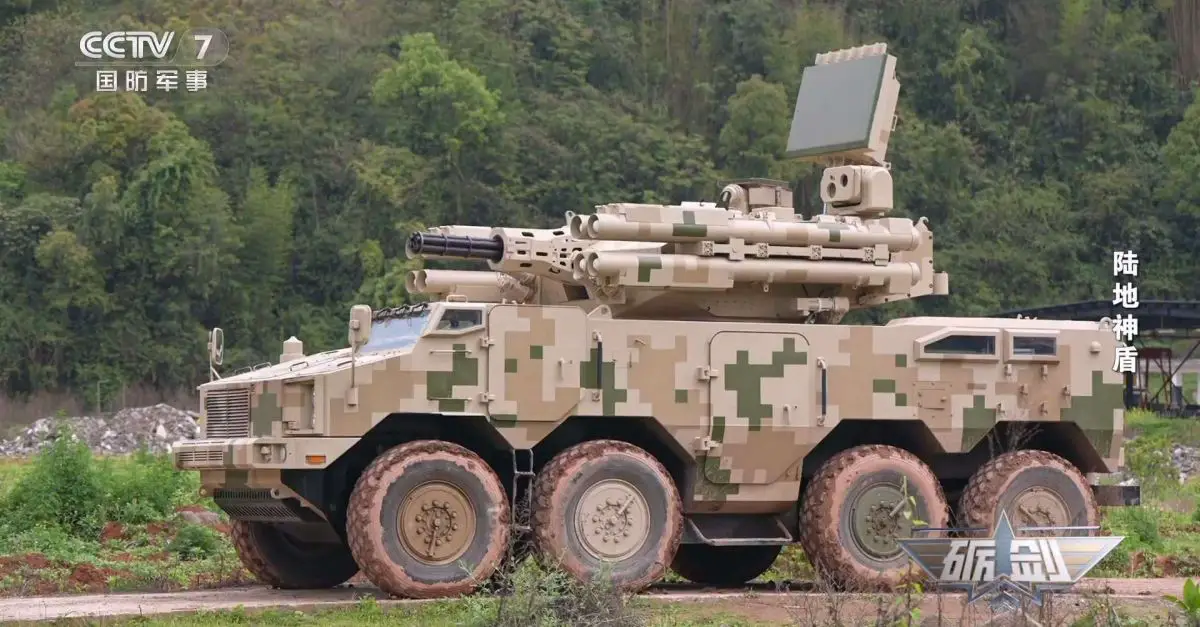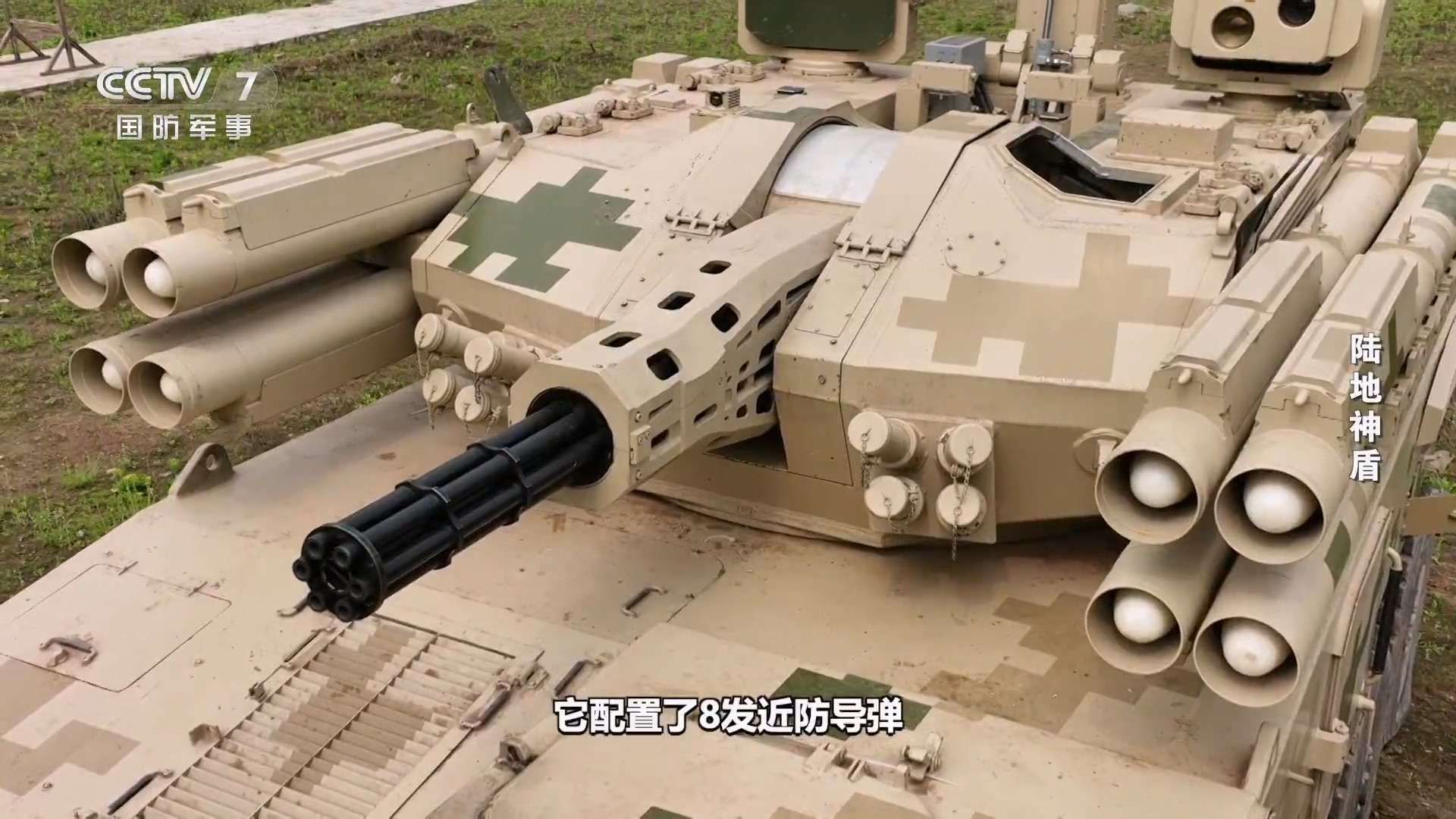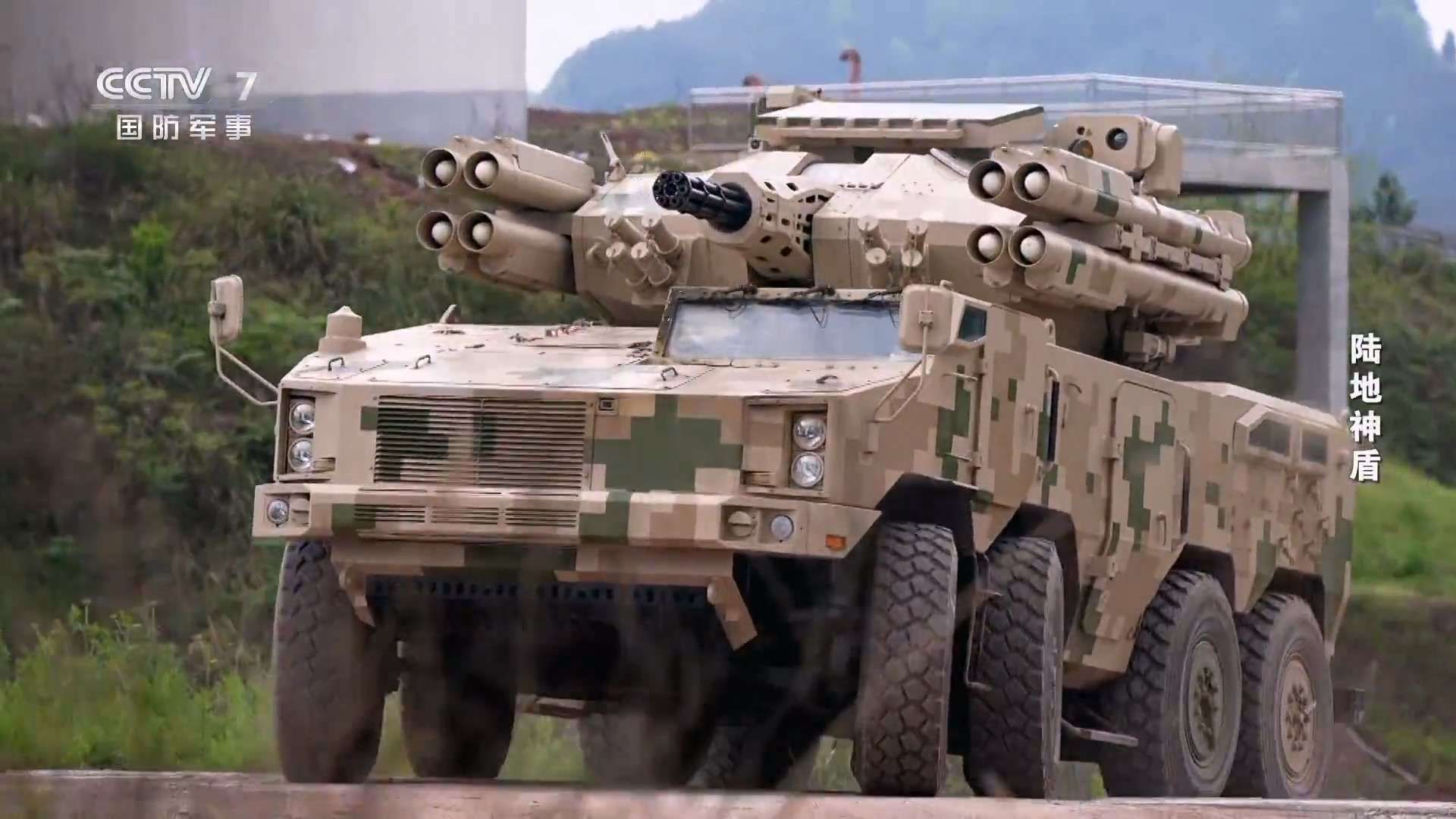Breaking news
China tests Type 625E short-range air defense system to challenge Russian Pantsir systems.
On May 16, the Chinese CCTV-7 channel, which primarily focuses on activities linked to the People's Liberation Army, tested the Type 625E short-range air defense system, which was unveiled in 2022. Developed by China South Industries Group Corporation (CSGC) and China North Industries Group Corporation (Norinco), this system aims to address short-range air defense (SHORAD) gaps in China's multi-layered air defense strategy.
Follow Army Recognition on Google News at this link

The Chinese Type 625E is often compared to the Russian Pantsir system, but the most common Pantsir-S1 and the latest Pantsir-SM variants offer extended range and advanced radar capabilities compared to its Chinese counterpart. (Picture source: CCTV-7)
Officially known as the Type 625E Anti-Aircraft Gun Missile Integrated Weapon System, the Type 625E includes a six-barrel 25mm Gatling gun, with an effective range of up to 2.5 kilometers and an altitude ceiling of 2 kilometers. This gun is capable of engaging a variety of aerial threats, including aircraft, helicopters, cruise missiles, loitering munitions, and low-flying UAVs, while also serving a secondary role in ground combat against light armored vehicles and buildings. The missile system component consists of two blocks of four FN-16 air-defense missiles with a maximum range of 6 kilometers. These missiles are designed to intercept low-altitude and ultra-low-altitude targets with high maneuverability, capable of performing 18 g turns. However, in some configurations, the system can carry FB-10 missiles, which have a longer engagement range of up to 10 km and can target threats at altitudes from 15 to 5,000 meters.
The system is mounted on an eight-wheeled high-mobility chassis, similar to the ZBL-08 wheeled infantry fighting vehicle, providing high mobility across various terrains, allowing for rapid deployment and repositioning in response to battlefield needs. Visually, the Type 625E features a front-engine layout with a large control room next to the cabin, and the central part houses the combat module with the integrated weapon systems.

The weaponry of the Type 625E includes a six-barrel 25mm Gatling gun, and eight FN-16 or FB-10 air defense missiles. (Picture source: CCTV-7)
For targeting and detection, the Type 625E combines a search radar, a tracking radar, and an optoelectronic tracking system, rendering it capable of detecting and tracking low-flying aircraft, drones, helicopters, and cruise missiles. Upon detecting high-speed incoming targets, the search radar provides target indication information, directing the tracking radar and optoelectronic systems to the target's position. These systems then intercept and track the target, with the tracking and stabilization controller performing real-time calculations to ensure stable tracking. This allows the Type 625E to reliably search for and track targets while on the move, measure distances accurately, stabilize the artillery, and automatically adjust shooting parameters. During engagement, the onboard fire control system continuously tracks the target, calculates its trajectory, and determines the best interception position, controlling the artillery aiming accordingly. Additionally, the system is equipped with infrared optical sensors, allowing it to engage multiple targets simultaneously through an infrared camera feed.

An advanced radar system is part of the setup, extending from behind the missile launchers. This radar enhances the Type 625E's ability to detect and track low-flying aircraft, drones, helicopters, and cruise missiles. (Picture source: CCTV-7)
Operationally, the Type 625E has been demonstrated during live-firing exercises with the PLA's 77th Group Army, showcasing its capabilities in real-world conditions. It was also displayed at the Zhuhai Air Show, a major defense industry expo in China, where its capabilities were highlighted to international audiences.
This system is often compared to the Russian Pantsir system, but the most common Pantsir-S1 and the latest Pantsir-SM variants offer extended range and advanced radar capabilities compared to the Type 625E. The Pantsir-S1 integrates 30mm dual autocannons and 57E6-E missiles with an engagement range of up to 20 km, while the Pantsir-SM further extends this capability with 57E6M-E missiles, offering a range of up to 30 km and improved radar detection up to 75 km, specifically designed to address modern drone threats and precision-guided munitions. In comparison, the Type 625E features a smaller 25mm Gatling gun, offering six cannons instead of four, but this advantage is nullified by the FN-16 or FB-10 missiles with a smaller maximum range of 10 km, making the Russian Pantsir systems more suitable for broader engagement scenarios.

The system is mounted on an eight-wheeled high-mobility chassis, similar to the ZBL-08 wheeled infantry fighting vehicle, providing high mobility across various terrains, allowing for rapid deployment and repositioning in response to battlefield needs. (Picture source: CCTV-7)


























